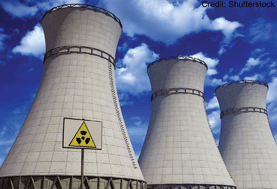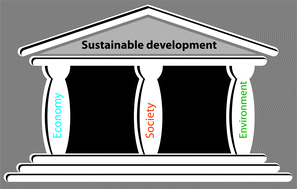At Journal of Environmental Monitoring we are committed to advancing understanding of the issues affecting our environment, and we know that your research is dependent on being up to date on all the developments in this complex field.
So did you know that with every issue we publish a news article written by consultant Mike Sharpe which summarises everything you need to know about the latest environmental legislation, quality control and health issues, research activities and chemical hazards? And, best of all, these articles are FREE to access!*
Here’s a sample of the great content in the latest articles:

Pesticides linked to decline of bees
Researchers have raised concern over the affect of low-dose pesticides on bees. Systemic insecticides, a common way to protect crops, can seriously damage the bees’ ability to navigate, scientists say. The new research strongly links the pesticides to the serious decline in honey bee numbers in the US and UK – a drop of around 50% in the last 25 years. The significance of the new work, published in Science, is that it is the first carried out in realistic, open-air conditions. Read more…
 Nuclear fall predicted as climate warnings grow
Nuclear fall predicted as climate warnings grow
The Fukushima disaster could lead to a 15% fall in world nuclear power generation by 2035, while over the same period power demand could rise by 3.1% a year, according to the International Energy Agency’s 2011 World Energy Outlook. It is the latest of a series of dour predictions on the future of nuclear energy and came amid warnings that global climate indicators continue to move in the wrong direction. Read more…
 Stroke risk from air pollution ‘rises in hours’
Stroke risk from air pollution ‘rises in hours’
Air pollution, even at levels generally considered safe by federal regulations, increases the risk of stroke by 34%, US researchers have found.
Researchers studied more than 1700 stroke patients in the Boston area over a 10-year period. They found exposure to ambient fine particulate matter (PM2.5), generally from vehicle traffic, was associated with a significantly higher risk of ischaemic strokes on days when the EPA’s air quality index for particulate matter was yellow instead of green. Read more…
 The road to Rio + 20
The road to Rio + 20
The countdown to the UN Conference on Sustainable Development (UNCSD) has begun in earnest with the publication of the first draft of the negotiating text to be discussed by governments. The conference, to be held in Rio de Janeiro, Brazil, in June will aim to set a framework for global environmental governance and comes twenty years after the first such conference held in the city in 1992 (hence, the moniker ‘Rio + 20’). Although focusing heavily on the green economy concept, the draft stresses this is merely a means to achieve sustainable development, “which must remain our overarching goal”. Read more…
Sign up for our e-alerts to receive an email when issues and news articles are published, you can also keep up with us through the blog RSS and Twitter.
* Articles are free to access through a simple registration process for an RSC Publishing Personal Account.
 This week’s HOT article is by Dieter Gladtke from the Landesamt für Natur, Umwelt und Verbraucherschutz Nordrhein-Westfalen and co-workers. In their paper, they present different collector types, sample workup procedures and analysis methods to measure the deposition of polycyclic aromatic hydrocarbons (PAH).
This week’s HOT article is by Dieter Gladtke from the Landesamt für Natur, Umwelt und Verbraucherschutz Nordrhein-Westfalen and co-workers. In their paper, they present different collector types, sample workup procedures and analysis methods to measure the deposition of polycyclic aromatic hydrocarbons (PAH).






















